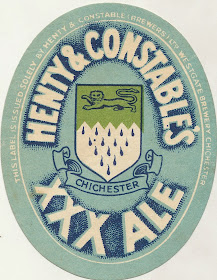So let’s have a look at how to build your brewery, once you’ve found the perfect site.
“To-day it is being realized more and more what an important part gravitation plays in the construction of a brewery. It means the saving of power and manual labour, and also eliminates the need for excessive pumping of worts. This latter procedure is not to be recommended, quite apart from the extra cost. Thus, we find many modern breweries built on what is known as the tower system. They have a flat roof, upon which are placed the various water cisterns and tanks. Considerable weight has to be carried, often in a small area. It is therefore essential that the building itself be of a substantial character, with walls of considerable thickness and solid foundations. A malt bin holding 1,000 quarters will have a weight of 150 tons due to the grain alone, plus the actual weight of the bin. A copper of 200 barrels' capacity, will hold, when filled, 32 tons of water or approximately 34 tons of wort; added to this is the very considerable weight of the copper itself. With massive plant of this nature, the need for a firm and adequate support is self-evident.”
"Brewing Theory and Practice" by E. J. Jeffery, 1956, page 20.
Pretty sure the Victorians were well aware of the importance of gravity. That’s why their classic brewery design is a tower. Surely it’s the other way around and in the 1950’s breweries started to abandon this classic approach?
Jefferey’s discussion of the weight of equipment in a brewery might explain why they stopped piling all the kit on top of each other: you needed a really robust building to take all that weight, especially if you were brewing on a grand scale. Most modern breweries I’ve seen are single storey. Essentially dirty great sheds. Without even proper cellars.
This next bit is definitely good advice. Have searched newspaper archives, I’m well aware of how susceptible breweries were to fire.
“A brewery should be constructed with the idea of being as fireproof as possible. The use of wood should be avoided so far as is consistent with the proposed methods of brewing. Lift shafts should be made fireproof, otherwise in case of fire they act as draught channels. Not only should wood be avoided in the construction of the actual lift, but also in that of the framework of the shaft and the doors on each floor. The latter should be made of sheet iron, and should close automatically when the lift leaves each floor. The lift shaft is thus practically sealed against flames. Particular stress is laid upon the importance of making a lift shaft fireproof as it is almost invariably by this channel that flames in a brewery make such rapid headway. Wooden floors are not only inflammable but difficult to keep clean and dry. Concrete or asphalt are much more commendable on both scores, being impervious to moisture and easy to keep clean. Many other attractive and durable floor materials with improved cement bases are now available. Wooden stairs and stairways should also be avoided. Stone steps in a brick stairway or complete concrete construction are perhaps the ideal, failing which, iron grid steps may be used. The latter, however, hold dirt rather badly, and so need constant attention. Such precautions add considerably to the cost of a building, but are undoubtedly worthwhile.”
"Brewing Theory and Practice" by E. J. Jeffery, 1956, page 21.
I’d tile as many surfaces as possible, myself. Nice and easy to keep clean, last for ages and look nice to boot. Many of the classic breweries made extensive use of tilework, often in really attractive designs.
Most breweries I can recall have the type of metal staircase Jefferey warns against. Not so sure about how easy concrete is to keep clean. It doesn’t have a perfectly smooth surface, leaving holes for dirt to hide in.

I love these posts. I like to imagine that after I've read enough of them I will be able to design and build the perfect brewery, and with all your other posts on beer itself- the perfect recipes. I really need to get out more.
ReplyDeleteWouldn't want any sort of glazed tiles on the floor myself, too slippery.
ReplyDelete